One of the most common problems reported for refrigerators is, “My refrigerator doesn’t get cold enough!”
When your refrigeration unit isn’t getting down to temperature, it pretty much defeats the purpose of having a refrigerator in the first place. Not only are you at risk for serving potentially spoiled and unsafe product (making diners sick and costing you in fines), but how much is that wasted product going to hurt your bottom line?
Here are four common reasons your refrigerator might not be getting as cold as it’s supposed to:
Leave your refrigerator on to diagnose issues, but be sure to unplug your refrigerator before you begin any hands-on work!
 1. Compressor Motor. Check to see if your compressor is running. This rather expensive part on your refrigerator acts as a motor and a pump that moves the refrigerant around the system. Sensors track when the temperature in your refrigerator rises above its set point and signals the compressor to start. If the compressor is damaged or simply worn out, the cooling effect becomes less efficient, resulting in a fridge that can’t get cold enough.
1. Compressor Motor. Check to see if your compressor is running. This rather expensive part on your refrigerator acts as a motor and a pump that moves the refrigerant around the system. Sensors track when the temperature in your refrigerator rises above its set point and signals the compressor to start. If the compressor is damaged or simply worn out, the cooling effect becomes less efficient, resulting in a fridge that can’t get cold enough.
First things first—put your ear to the compressor and see if you hear a humming sound or other steady noise. The compressor is typically located at the bottom of the refrigerator and accessed from the back of the unit. If you do, not hear a sound that is the first indication that something is wrong with the compressor. If you do in fact hear a steady humming, this indicates that your compressor motor is running and it could be another component that works in conjunction with the compressor to cool your refrigerator.
FIRST – UNPLUG your refrigerator prior to proceeding with any work on it.
Look up the make and model of your refrigerator and purchase the proper compressor for your unit. Unplug the current compressor by detaching the wiring and valves and uninstall the mounting hardware. Install a new compressor with the proper wiring code. Ensure your refrigerator has the proper refrigerant present for your unit in order to get the new compressor up and running.
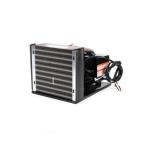 2. Condenser Coils. The condenser coils found at the back of your refrigerator are responsible for getting heated refrigerators cooled. If your condenser coils are dirty, you may find that your refrigerator is unable to cool properly; this is due to the fact that dirt acts as an insulator, preventing heat to dissipate and the refrigerant left unable to cool. Plus, overheating could cause your compressor to stop working, causing the entire refrigerator to stop working as well.
2. Condenser Coils. The condenser coils found at the back of your refrigerator are responsible for getting heated refrigerators cooled. If your condenser coils are dirty, you may find that your refrigerator is unable to cool properly; this is due to the fact that dirt acts as an insulator, preventing heat to dissipate and the refrigerant left unable to cool. Plus, overheating could cause your compressor to stop working, causing the entire refrigerator to stop working as well.
FIRST – UNPLUG your refrigerator prior to proceeding with any work on it.
Cleaning your condenser coils is easy and doesn’t require a technician. Use a vacuum to remove loose dust. A duster may help remove dust from the coils as well. If you find that neither a vacuum nor duster is removing the grime entirely, try a damp rag soaked in soapy water. Be sure to wipe the coils and allow them to dry completely before plugging your refrigerator back in. Regularly clean your condenser coils for maintenance.
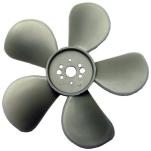 3. Evaporator Fan Motor. The evaporator fan motor circulates cold air from the coils throughout the rest of the refrigerator. Depending on your refrigerator model, your unit could have one or more of these motors. If the evaporator fan motor is not working, no cold air will be able to circulate, thus preventing your refrigerator from getting down to temperature. Do you hear a rattling noise? Or does your compressor run but the fan doesn’t? You might need to investigate further.
3. Evaporator Fan Motor. The evaporator fan motor circulates cold air from the coils throughout the rest of the refrigerator. Depending on your refrigerator model, your unit could have one or more of these motors. If the evaporator fan motor is not working, no cold air will be able to circulate, thus preventing your refrigerator from getting down to temperature. Do you hear a rattling noise? Or does your compressor run but the fan doesn’t? You might need to investigate further.
FIRST – UNPLUG your refrigerator prior to proceeding with any work on it.
Check your motor by first turning the fan blade by hand. If the motor’s shaft is hard to turn, it might be gummed up with dirt. If the fan turns freely, continue by checking the wiring connections. Disconnect, and search for the appropriate evaporator fan motor for your unit before reconnecting again.
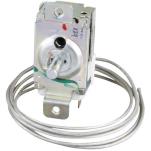 4. Temperature Control Thermostat. The temperature control thermostat is a dial (or digital readout) that allows users to set an internal temperature on a refrigerator. The dial itself doesn’t set the temperature, rather it permits power to flow through to the compressor. As the cooling process regulator, a defective or broken temperature control thermostat could be responsible for a refrigerator that’s unable to get down to temperature.
4. Temperature Control Thermostat. The temperature control thermostat is a dial (or digital readout) that allows users to set an internal temperature on a refrigerator. The dial itself doesn’t set the temperature, rather it permits power to flow through to the compressor. As the cooling process regulator, a defective or broken temperature control thermostat could be responsible for a refrigerator that’s unable to get down to temperature.
FIRST – UNPLUG your refrigerator prior to proceeding with any work on it.
If you suspect something is wrong with the temperature control thermostat, pull the control knob off and set aside. Remove the screws that secure the control housing and carefully lower the control housing as much as you can. Once you release the support brackets, disconnect the wires (it helps to snap a picture beforehand so you can wire it back into place afterwards). Remove your existing unit and replace with a new temperature control thermostat.
Is your refrigerator acting up? Contact us online or give us a call at 888-388-6372.
 Corner Booth Blog | TundraFMP Restaurant Supply, News & Equipment Blog
Corner Booth Blog | TundraFMP Restaurant Supply, News & Equipment Blog
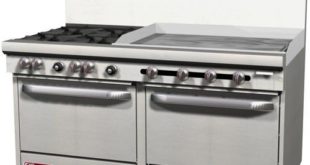
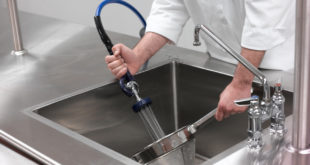
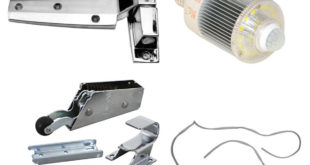
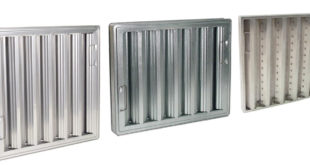
Really a great share!!
A little efforts can keep you away from big hassles of repairing a refrigerator such as avoiding overloading your refrigerator and cleaning condenser coils timely.
I will have to check on my refrigerator evaporator fan. I have heard a little rattling and I really hope that is the only problem. It shouldn’t be too hard to fix. However, I also think it is worth mentioning here that you should know where the fan is so that you don’t block it with food. This will probably also keep air from circulating in the refrigerator.